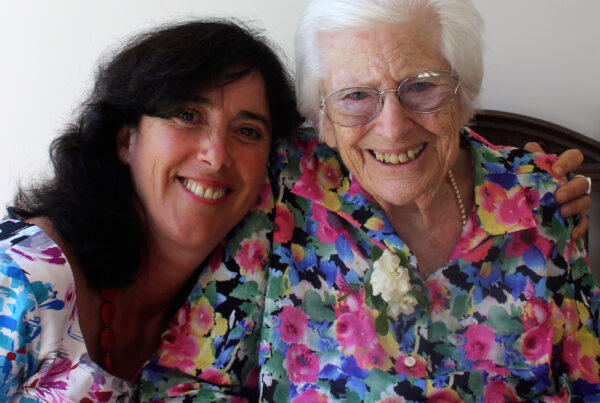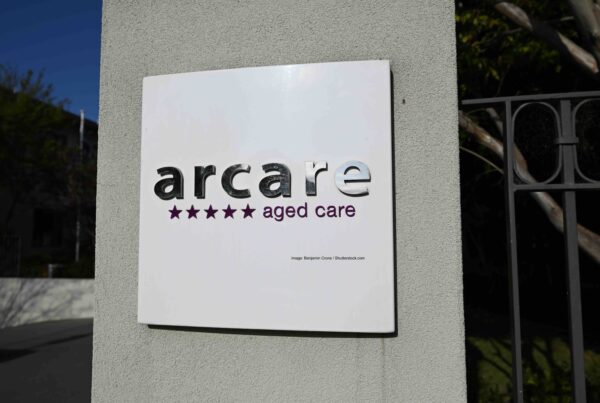When the federal government decreed that Australians should “live with Covid”, the safety of older people living in aged care homes was once again not on the Coalition’s radar.
In yet another predictable disaster, Covid has spread like wildfire in aged care homes.
On Christmas Eve, 105 aged care homes around Australia had an active outbreak. Two weeks later (7 January), the number of homes with an outbreak had exploded, more than quadrupling to 495. There are 168 outbreaks in New South Wales, 133 in Victoria, 69 in South Australia, 110 in Queensland, 12 in Tasmania, two in the ACT and one in Northern Territory.
There are currently 1,465 residents and 1,875 staff who are positive for Covid. A single case – either resident or staff – has caused many aged care homes to lock residents in and families out.
Although aged care providers claim lockdowns are done to “save lives”, what type of life is it when you are unable to be with the people you love?
For about one third of residents, this was their last Christmas. It is heartbreaking that so many were unable to spend the holidays with their families. And in some homes, residents are confined to their rooms during a lockdown. This is not only profoundly damaging to their mental and physical wellbeing, but is also potentially illegal.
With a chronic shortage of staff in many aged care homes, families are more concerned residents will die of neglect than Covid. Will staff have time to help residents eat their meals, ensure they drink, walk them to the toilet and provide social stimulation?
Rather than mandate a national criteria for who can enter an aged care home during an outbreak, the federal government allows providers to make their own rules. The federal government has a “hands-off approach”, treating each aged care home as an individual business.
As a result many aged care homes are a law unto themselves. They impose their own rules about who can and can’t enter their home, irrespective of the public health orders and the peak bodies’ industry code for visiting residential aged care homes.
So what has gone so terribly wrong during the latest Omicron wave? Why are so many aged care homes in lockdown?
The strollout of vaccine boosters to residents is one key failure.
Two months ago, on 8 November, the minister for health and aged care, Greg Hunt, announced the beginning of the booster program in aged care homes. The boosters would be provided by “in-reach clinics delivered primarily by vaccine administration providers under contract arrangements with the commonwealth”.
Rather than rely on the existing structures that successfully administer the annual flu booster to residents – with local GPs visiting the aged care homes – the federal government outsourced the Covid booster rollout to private companies.
Although accurate numbers are difficult to ascertain, these “in-reach clinics” had only visited around 50% of aged care homes before Christmas. And then one of the private companies, Aspen Medical, took holidays over the Christmas break.
Despite all the evidence to the contrary, the minister for aged care services, Richard Colbeck, put a positive spin on the failure of the booster program: “We’re probably – we’re a bit ahead of where we thought we’d be when we started the program in early November.”
This absurd statement indicates Colbeck does not recognise the importance of boosters to protect residents when community transmission rates are high.
For example, three residents died recently during an outbreak in Bene aged care in St Agnes in South Australia. Can Colbeck confirm whether residents at this aged care home have received a booster?
A second failure involves rapid antigen tests. Nearly five months ago, on 15 August, Hunt announced RATs would be available to aged care homes. “We anticipate that regular use of RAT to screen aged care employees and visitors will provide much greater reassurance,” he said.
Rapid tests are key to ensuring the safety of both residents and staff. Many of the lockdowns could have been avoided if all staff had taken a rapid antigen test before each shift since August. While taking a test may be inconvenient and time-consuming, it is infinitely preferable to putting residents and families through the trauma of a lockdown.
According to the Department of Health website: “Kits are now available for screening workers and visitors in aged care environments to help prevent outbreaks, or contain the spread of outbreaks.”
The most recent data also highlights the fact that some aged care homes have had a significant increase in residents testing positive over the past fortnight, while others have been able to contain the spread. This suggests some homes have a good “pandemic plan” and others don’t.
In addition, several aged care homes have had numerous outbreaks. St George aged care centre (NSW), for example, is currently experiencing its fifth outbreak, while others have had none. Has the regulator assessed the infection control protocols and staffing levels at homes with numerous outbreaks? Not taking such a step seems a most basic dereliction of duty from a regulator.
The lack of leadership and the “hands-off approach” of Hunt, Colbeck and the Aged Care Quality and Safety Commission during the pandemic has had heartbreaking consequences for many residents and families around the nation.
Sooner or later our federal government must be held to account for the numerous preventable tragedies that have occurred in the aged care sector.
First published in The Guardian 10 January 2022



